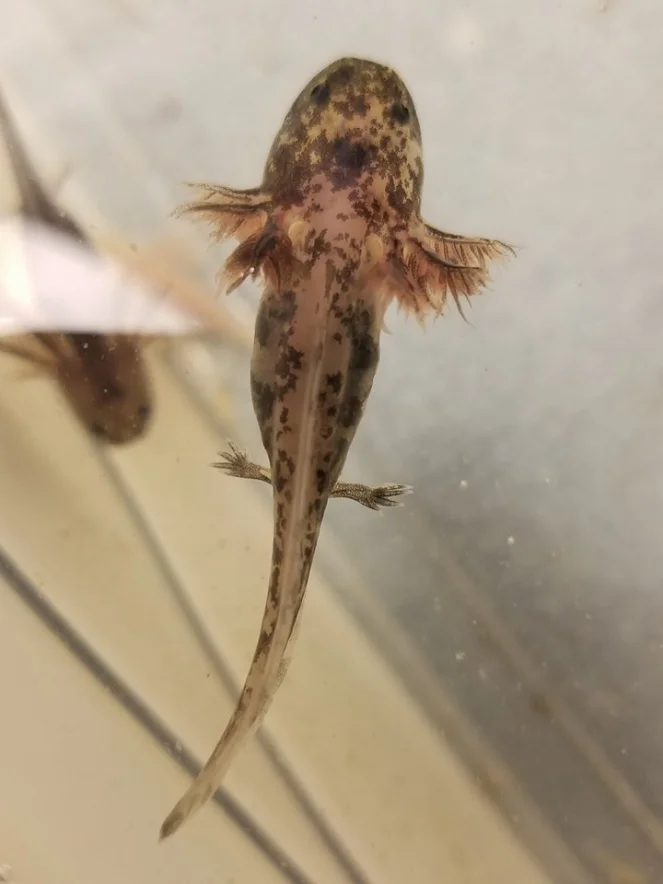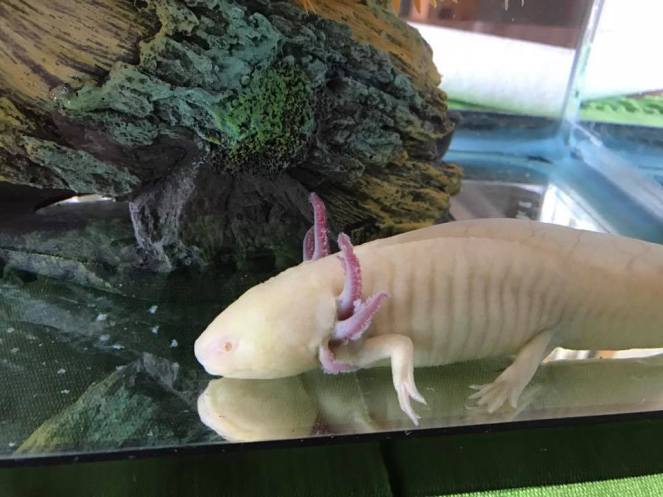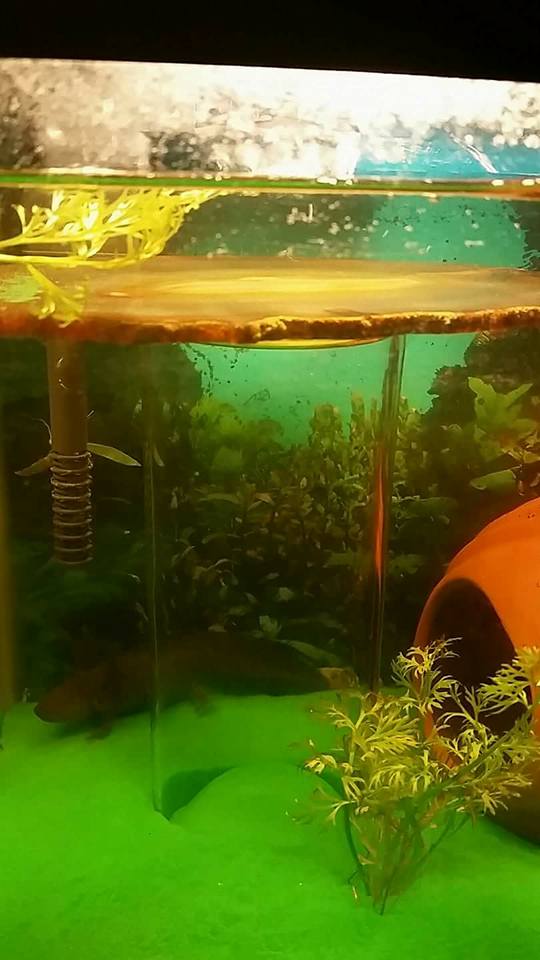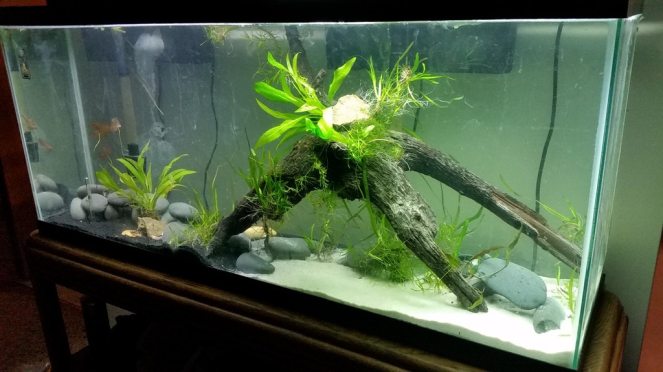
The betta is probably the most well-known fish in the world following the gold fish. These fish are highly prized for their amazing fins and bright colors. They also have a very friendly temperament for a fish and are almost always interested on the adventures of the world outside of their tank. They are criminally misunderstood. Most bettas are seen living in small little cups at the pet store only to be moved into small little bowls and vases. Some of these fish make it but a majority live a shortened life at best. Let’s look at how to care for your new betta!
Habitat

So this is where most bettas lose a lot of their life span. The Betta is a very flexible fish. They are one of the few fish in the ‘Labyrinth’ category meaning they contain the labyrinth organ. It is a very basic lung which allows them to breathe air out of water for short periods of time. Because of this, the betta should always have access to air to ‘gulp’. This is an evolutionary advantage for the wild betta that tends to live in rice fields and must jump from puddle to puddle when the water gets too low. Their fins also allow the betta to pull themselves along like rudimentary arms. This is not a behavior you should see in a kept betta.(1)
The tank at MINIMUM should be 5 gallons, ideally 10. Yes, technically a betta can live in a 2 gallon bowl in the same way you can technically live in a small studio apartment. Except you can’t leave to go to the park, you know cause you’re in a bowel… and you’re a fish. Bowls also aren’t a great shape for bettas. Bettas like swimming back and forth so a bowl won’t get them the length they really enjoy. Tanks should always be cycled before adding any fish. Because of the betta’s ability to jump, a lid should be used at all times. (2)
A filter is needed to clean the water and remove ammonia. It can provide too much flow so sponge filters are best for the betta’s very delicate fins. A heater is also needed; bettas are tropical fish and must be kept in water in the high 70s at their coolest.
Plants are awesome for a betta tank. They look great and bettas also love the greenery. The bettas wont hurt the plants but they do love rubbing along them and through them. Mine enjoys hiding behind my Anubis.
Fake decorations are also fine but keep in mind that betta’s fins are delicate and can rip or tear easily. Sharp edges and wires should be avoided. (2)
Tank Mates

Bettas are notorious for their other name ‘the fighting fish’. They do not get along with other males or even most flashy similar sized fish but that doesn’t mean you can’t have anything else in the tank. Smaller schooling fish like tetra and bottom feeders like plecos can work sometimes depending on the temperament of your betta. Snails are usually a win in the betta department but be warned they may snack on the babies. Same goes with shrimp. (3) Females can be housed together ocassionally but mine have never gotten along so be wary. The main fish that should be avoided are bigger flashier fish, any kind of agressive or semi-agressive fish, and fish that may nip at the betta’s long fins.
Food

Overfeeding is another consistent problem with bettas. They need to be fed 2-3 times a day, the size of their eye. I know that sounds weird but it is easier to visualize the very small amount a betta should be eating. I feed one pellet that I have crushed up for mine. It doesn’t look like enough but it is.
While the mass marketed flake food is easy, cheap, and may be taken by your betta it’s not the best for your fish or your water. The flakes start degrading when they hit the water. Higher quality betta pellets are the best for your betta. Look for ones specifically formulated for betta to improve color and fin health. Bloodworms are a great treat to be provided to your betta on occasion but they offer very little in the way of nutritional value if they aren’t live. (2)
Sexing

Thankfully bettas are rather easy to sex and will be sexed by the store you purchase at. Males have longer fins and beards; they also tend to be more colorful and dramatic. If you have interest in breeding I recommend some serious research. Most babies will be ‘cull-grade’ which means you most likely won’t be able to sell the babies so if you aren’t interested in culling then be prepared to have a ton of room.
Behavior

Flaring is a common behavior in bettas. The bettas will push out their beard (a flap of skin by the gills) and flip out their fins to their fullest while facing you (or whatever they have decided invaded their territory). They do this even when happy, try not to take it personally.
Building a bubble nest is a common behavior in happy bettas. This is a result of the labyrinth organ (1). They will blow bubbles on the surface of the water in hopes of convincing a female to lay her eggs there. They will do this even without a female present.
Rubbing against plants can be a way of itching and staking out territory or hunting.
Resting on leaves is a common way for bettas to handle their huge and heavy fins. Providing a rest for them about halfway up the tank is a good spot for them.
Types
Bettas come in a wide array of colors and fin types. While it is not an exhaustive list this is an excellent place to start. Most local pet stores will have standard and crown tail bettas for around 5 dollars. The other types tend to get pricy with some types maxing out in the 100$ range. I recommend reddit.com/r/bettafish for any show quality bettas.
http://www.theaquariumguide.com/articles/betta-fish-series-types-of-betta-fish
Common Questions
My betta is changing colors! Is he okay?
Yes, it is completely normal. Certain bettas can change color all throughout their lives. If you have a new betta this just means you are taking great care of him and he is healing from the conditions at the store. If he is older the color changes will be more subtle but still can happen. What do DON’T want to see is a bright and colorful betta becoming dull and gray. This indicates a toxic environment. (4)
How can I keep more than 1 betta in a tank?
Males, it’s got to be a huge tank. Perhaps a 40 gallon Long (breeder). Females can live in the same tank but they also have aggression and it can lead to death. If you want them in the same tank, say a split 20 gallon, you can buy or make a tank divider. It is like a screen that splits the tank down the middle but still allows water flow through it. Plants can hide it or create a false ‘wall’ around it to prevent the bettas from seeing one another. (3)
I found my betta on the floor, what do I do?
Don’t panic. The betta can survive out of water much longer than most fish. First thing to do is put it back in the bowl and place a covering over.
Second, prepare a shallow dish or bowl with clean dechlorinated water to move the betta into. It should be about 2x times the height of the betta so it still covers him but is low enough he can easily get water.
Third, move the betta to the new container and examine him. Put a lid on the continer once he is move. Inspect the fins for damage, it may be totally normal for the betta to be laying on the bottom of the water. Watch him closely and if he can’t make it to the top of the water gently life his body so he can gulp air every 15 min. If your betta’s gills are not moving, he is not gulping air or he is dried out, your betta is dead. If you see any of these signs or any movement he still stands a chance. Let him stay alone in this tank to heal. (5)
Lastly, if your betta has made it check his tank water. Bettas can jump for many reasons: being startled, seeing something outside the tank (like another male, or what they think is one), or even looking for food. The most common reason however is water quality, if the water becomes toxic or dirty a betta may jump in search of another puddle. This is why it is important to cycle EVERY tank.
What is this white line on my betta’s fins?
It depends. If there are spots that are rounded and fuzzy your betta may have ick. It’s a common aquarium fungus that rarely kills fish but does make them itch. You may notice your betta rubbing on plants and substrate. This can be easily treated by jumping the temp up to 84 for about a week.
If it is just on the outside of the fins then you have a growing betta! This can mean they are growing do to age or regrowing damaged fins. This can happen months after you bring them home from the pet store or after an injury. Don’t worry, as long as you keep an eye on any injuries for infection he should be fine. (5)
Sources:
- https://www.thespruce.com/what-is-a-labyrinth-fish-1380796
- http://japanesefightingfish.org/betta-fish-care/
- http://www.theaquariumguide.com/articles/betta-fish-series-suitable-betta-tank-mates
- http://pets.thenest.com/bettas-change-color-4520.html
- https://www.quora.com/How-do-you-help-a-Betta-regrow-its-fin





























 Plants are a fantastic addition to most any aquarium (even brackish with the right plants). While finding the right plant may take longer than one would think it can be a very rewarding experience and contributes to nitrate and ammonium removal from the water column. Plus it just looks great.
Plants are a fantastic addition to most any aquarium (even brackish with the right plants). While finding the right plant may take longer than one would think it can be a very rewarding experience and contributes to nitrate and ammonium removal from the water column. Plus it just looks great.